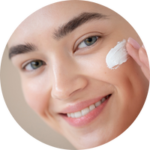Everything You Need to Know About Layering Skincare Products
When it comes to skincare, understanding how to layer your products correctly can make all the difference in achieving glowing, healthy skin. Whether you’re a skincare enthusiast or just starting to build your routine, the concept of layering skincare products is essential. But with the abundance of products available today, how do you know the best order and technique for applying them? In this comprehensive guide, we’ll walk you through everything you need to know about layering skincare products for optimal results.
What Is Layering Skincare?
Layering skincare refers to the practice of applying multiple skincare products in a specific order to maximize their effectiveness. The idea is to use lightweight formulas first and heavier, more hydrating products last. By applying skincare in the right sequence, you ensure that your skin receives the full benefits of each product, without interfering with their absorption or effectiveness.
Why Is Layering Important?
Layering is crucial because it helps create a synergistic effect between your products. Each step in your skincare routine serves a unique purpose, whether it’s hydration, exfoliation, or treatment. When applied in the right order, your products work better together to address various skin concerns, such as acne, dryness, or aging, and deliver more noticeable results.
For example, serums are often more concentrated and contain active ingredients like Vitamin C, retinol, or hyaluronic acid. By applying them after cleansing and toning (but before heavier creams), they can penetrate the skin effectively and work their magic.
The Basic Steps of Layering Skincare
While everyone’s skincare routine is slightly different based on individual needs, there is a general order in which products should be applied. Here is a breakdown of the ideal skincare layering sequence:
1. Cleanser: Start With a Clean Canvas
Cleansing is the foundation of any skincare routine. Before applying any products, it’s important to remove dirt, oil, makeup, and environmental pollutants from your skin. Use a gentle cleanser suited for your skin type to avoid stripping away essential oils.
There are different types of cleansers, such as gel cleansers, cream cleansers, and micellar water. Be sure to pick one that matches your skin’s needs. For example, if you have dry skin, you may prefer a hydrating cleanser, while oily skin types may benefit from a foaming or gel-based cleanser.
2. Toner: Balance and Prep Your Skin
After cleansing, you may want to apply a toner. While not everyone needs a toner, this step can help balance your skin’s pH, remove any remaining impurities, and prepare your skin for better absorption of subsequent products. Some toners also contain ingredients like exfoliants (AHA or BHA) that can help slough off dead skin cells.
Choose a toner based on your skin type and concerns:
-
Hydrating Toner: For dry skin, look for toners with ingredients like glycerin or hyaluronic acid.
-
Exfoliating Toner: For acne-prone or dull skin, opt for toners with AHA or BHA.
-
Soothing Toner: For sensitive skin, choose a toner with calming ingredients like chamomile or aloe vera.
3. Essence or Serum: Target Specific Skin Concerns
Essences and serums are lightweight, highly concentrated products that target specific skin concerns. Serums are typically packed with active ingredients like Vitamin C, hyaluronic acid, retinol, peptides, or antioxidants, while essences focus more on hydration.
-
Essence: An essence is applied right after toning and is often used to hydrate and balance the skin. It helps to prepare the skin for the next steps in your routine.
-
Serum: Serums, on the other hand, contain potent active ingredients designed to treat concerns like dark spots, fine lines, wrinkles, or acne. They are the most concentrated part of your routine.
Remember to choose a serum that addresses your main skin concerns. For example:
-
Vitamin C Serum: Great for brightening and combating free radicals.
-
Hyaluronic Acid Serum: Ideal for hydration and plumping the skin.
-
Retinol Serum: Best for anti-aging and promoting skin cell turnover.
4. Eye Cream: Tackle Puffiness and Dark Circles
The skin around your eyes is delicate and often the first area to show signs of aging or fatigue. Applying an eye cream before moisturizing can help treat puffiness, dark circles, or fine lines. While this step isn’t mandatory for everyone, it can be a beneficial addition to your routine if you experience specific concerns in this area.
When choosing an eye cream, look for formulas that target your particular concern. For puffiness, ingredients like caffeine and peptides are helpful. For dark circles, look for creams with Vitamin K, Vitamin C, or niacinamide.
5. Moisturizer: Lock in Hydration
Moisturizing is key to maintaining skin hydration and ensuring a healthy skin barrier. Regardless of your skin type, moisture is crucial. The main purpose of a moisturizer is to seal in all the active ingredients from previous steps and prevent water loss.
For dry skin, you may need a thicker cream, while oily or acne-prone skin may benefit from a lighter gel-based moisturizer. Make sure to choose a moisturizer that fits your skin type and provides enough hydration without clogging pores.
6. Sunscreen: Protect Your Skin
The final and arguably most important step in any skincare routine is applying sunscreen. Sunscreen protects the skin from harmful UV rays that can cause premature aging, hyperpigmentation, and even skin cancer. Always choose a broad-spectrum sunscreen with at least SPF 30, and reapply every two hours if you’re spending extended time outdoors.
Sunscreen should be the last product you apply in your morning skincare routine, as it acts as a barrier to shield your skin from UV damage.
How to Layer Skincare Products Based on Texture
The most common guideline to layer skin care products, is that you apply the tiniest and lightest products first, and then the thickest, heavier products later. Here’s how to layer on the texture of the product:
-
Products that are water-based (like essences, toners or serums) should be the first to go.
-
oils-based cosmetics (such like facial oil or oil-based products) should be applied immediately following products based on water.
-
Cremes (including the eye creams as well as moisturizers) will follow.
-
Sunscreen should be the last step of your routine.
Tips for Layering Skincare Like a Pro
1. Be Gentle
Be sure to apply the products gently and without pulling or tugging against your skin. The eyelids’ skin particularly, is prone to irritation and therefore, make sure you apply the product with a gentle touch.
2. Wait Between Layers
Each layer of skin care to soak in prior to applying the following. This will ensure that every product can be absorbed into the skin. Typically you should wait between 30 seconds and an hour before each treatment is optimal.
3. Customize Your Routine
Although the general procedure for applying skincare products is generally accepted It’s crucial to customize your routine according to your individual skin’s needs. If you’re prone to skin irritation it may be advisable to cut out certain products or apply them less often. Additionally, you shouldn’t use every product you use every day. Sometimes it’s better to use less.
4. Don’t Over-layer
Applying too many different products could overpower your skin and could result in clogged pores, or irritation. Make sure you stick to the basics: cleanser and toner (if required) as well as moisturizer, serum, and sunscreen. Only add additional products such as masks or exfoliators every few days.
5. Adapt Your Routine Seasonally
Your skin’s requirements can alter with the changing seasons. For instance, in winter, you may require an extra thicker moisturizer to fight dryness. In summer, you might prefer light routine that places more focus on sunblock.
Common Mistakes to Avoid When Layering Skincare
Even with the best intentions, some common mistakes can undermine your skincare routine. Here are a few things to keep in mind to ensure you’re getting the most out of your products.
1. Mixing Incompatible Ingredients
Some skincare ingredients can cancel each other out or cause irritation when used together. For example, retinol and Vitamin C can sometimes be too harsh when layered together, especially for sensitive skin. Similarly, certain acids (like AHA or BHA) can reduce the effectiveness of other active ingredients like Vitamin C or retinol.
To avoid this, consider applying these ingredients at different times of the day (Vitamin C in the morning, retinol at night) or alternate days to allow your skin to absorb the full benefits without irritation.
2. Overloading on Actives
It can be tempting to use a variety of active ingredients like retinol, Vitamin C, and acids in your routine, hoping for faster results. However, too many actives can overwhelm your skin and cause redness, irritation, or dryness. It’s essential to introduce new active ingredients gradually and give your skin time to adjust. Focus on one or two main concerns at a time and tailor your routine accordingly.
3. Neglecting Your Neck and Décolletage
The skin on your neck and décolletage is just as sensitive as your face and can show signs of aging if neglected. Make sure to extend your skincare routine to these areas, especially when applying products like moisturizers, serums, or sunscreen. Treating your neck and décolletage with the same care as your face can help maintain smooth, youthful skin all over.
Final Thoughts
Skincare is a personal journey, and the best routine for you depends on your individual needs, concerns, and preferences. Layering your products in the correct order ensures each one can do its job, so be patient and consistent in your approach. Don’t be afraid to experiment with different products or tweak your routine as your skin changes. By following the proper steps, you’ll be well on your way to achieving beautiful, healthy skin.






